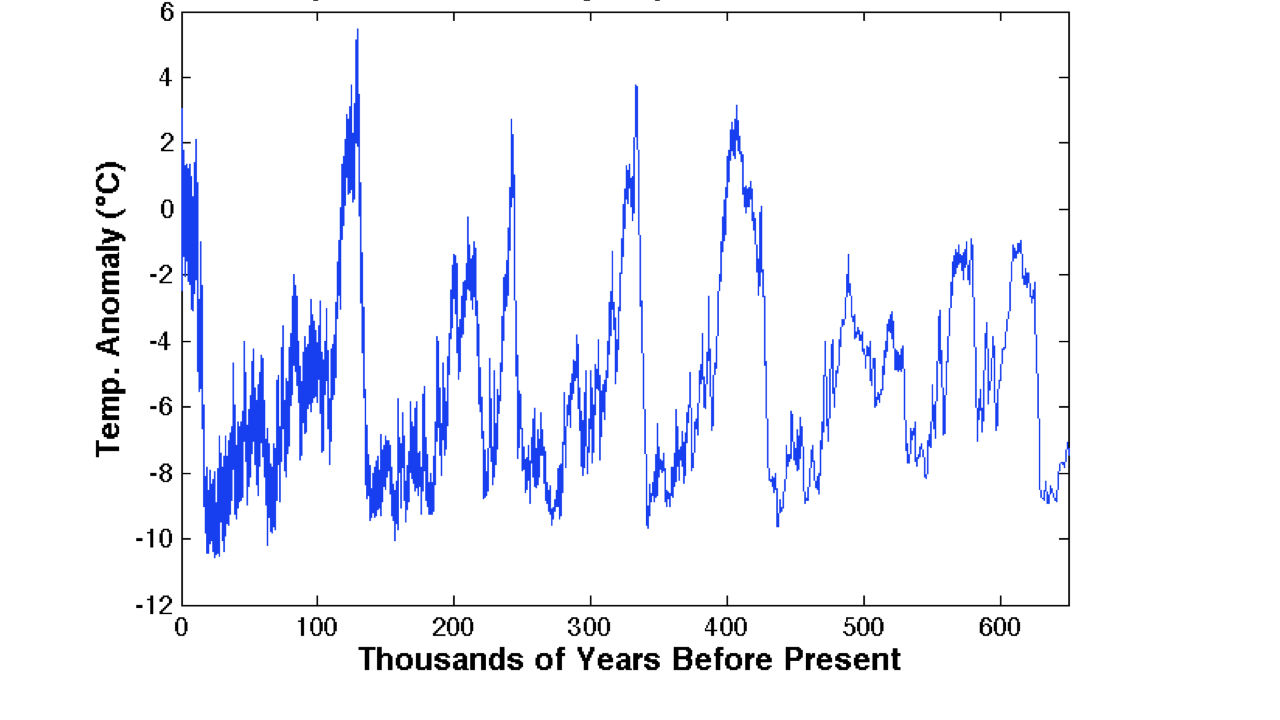Miracles of the Mid-Pleistocene Transition, Part 1
This blog is the first of a three-part series on new scientific discoveries and research that reveal the hitherto unrecognized miraculous nature of a recent event known as the Mid-Pleistocene Transition. If not for the exquisite fine-tuning in multiple ways and precise timing of this event, the high population and civilization we presently enjoy would have been impossible.
About 800,000 years ago, a dramatic shift occurred in Earth’s ice age cycle. This shift is known as the Mid-Pleistocene Transition (MPT). At the MPT the ice age cycle period changed from 41,000 years to approximately 100,000 years. The ice age cycle period also changed in another way: instead of a fixed 41,000-year period, it became a semi-regular 90,000- to 120,000-year cycle. The most dramatic changes, though, were in the cyclical variations in the sea level, the atmospheric carbon dioxide levels, and the amount of Earth’s surface covered by ice. If not for these changes occurring at exactly the time and at the magnitudes that they did, global human civilization and the potential redemption of billions of humans from their sin would have been impossible.
Most Popular Explanation for the MPT
The most popular scientific explanation for the MPT holds that instead of Earth’s climate variations being driven predominantly by the 41,000-year cycle of change in the tilt of Earth’s rotation axis (obliquity), about 800,000 years ago it began to be predominantly driven by the 100,000-year cycle of change in the eccentricity (ellipticity) of Earth’s orbit about the Sun. It is this explanation, facilitated by the ongoing rise of the Tibetan Plateau and altered ocean circulation patterns, that I described in my book, Improbable Planet.1 However, as far back as 1995 this explanation was challenged, and now recently published research findings are establishing new explanations that reveal much more fine-tuning design.
Scientists had appealed to the 41,000-year cycle of change in Earth’s obliquity and the 100,000-year cycle of change in Earth’s orbital eccentricity because both cycles affect insolation (solar heating of Earth’s surface). A rotation axis tilt of 24.5° (Earth’s maximum value) causes more of the Sun’s heat to be absorbed than a rotation axis tilt of 22.1° (Earth’s minimum value).2 Likewise, an orbital eccentricity of 0.0679 (Earth’s maximum value) causes more solar heat to be absorbed than a value of 0.000055 (Earth’s minimum value).3
Problems with the Most Popular Explanation for the MPT
The biggest problem with appealing to the cyclical variation in Earth’s orbital eccentricity to explain the MPT is that, compared to the obliquity and precession cycles, the impact of the 100,000-year orbital eccentricity cycle on insolation is weak. Furthermore, the 100,000-year cycle really is a combination of two orbital eccentricity cycles, one equal to 95,000 years and the other equal to 124,000 years.
The 95,000-year and 124,000-year cycles are not the only periodicities in Earth’s orbital eccentricity. There are two other known orbital eccentricity cyclical periods: 405,000 years and 1.2 million years.4 Of the four cycles, by far the most pronounced is the 405,000-year cycle. Yet, there is no evidence for a 405,000-year cycle in the Antarctic ice core records of past global mean temperatures (see figure 1). Also, the range of eccentricity variation throughout that time window is only a tiny fraction of Earth’s eccentricity extremes of 0.00055–0.0679. This factor makes Earth’s orbital eccentricity variation an especially weak effect on insolation over the past million years.
Figure 1: Dome C Antarctic Ice Core Temperature Record. Dramatic temperature anomalies appear at approximately 100,000-year intervals except for the past 9,000 years of stability, during which human civilization developed. Image credit: EPICA
New Explanations for the MPT
Recognizing the inadequacy of Earth’s orbital eccentricity cycles to explain the MPT, different science research groups have proposed eleven explanations for the MPT. In part 2 of this series I will describe these eleven explanations and their relative merits. In part 3 I will describe which of the eleven explanations plus the two I mentioned in Improbable Planet most likely explains the MPT, and I will discuss the phenomenon’s physical and spiritual implications.
Endnotes
- Hugh Ross, Improbable Planet: How Earth Became Humanity’s Home (Grand Rapids, MI: Baker, 2016): 204–08.
- Gongjie Li and Konstantin Batygin, “Pre-Late Heavy Bombardment Evolution of the Earth’s Obliquity,” Astrophysical Journal 795 (2014): id. 67, doi:10.1088/0004-637X/795/1/67; Anandu D. Vernekar, “A Study of Mean Temperature of the Earth’s Surface,” in Atmospheric Radiation: Proceedings of the American Meteorological Society Conference in Fort Collins, Colorado, August 7–9, 1972, p. 228.
- Richard A. Muller and Gordon J. McDonald, “Glacial Cycles and Orbital Inclination,” Nature 377 (September 14, 1995): 107–08, doi:10.1038/377107b0.
- Laskar et al., “La2010: A New Orbital Solution for the Long-Term Motion of the Earth,” Astronomy & Astrophysics532 (August 2011): A89, doi:10.1051/0004-6361/201116836.







